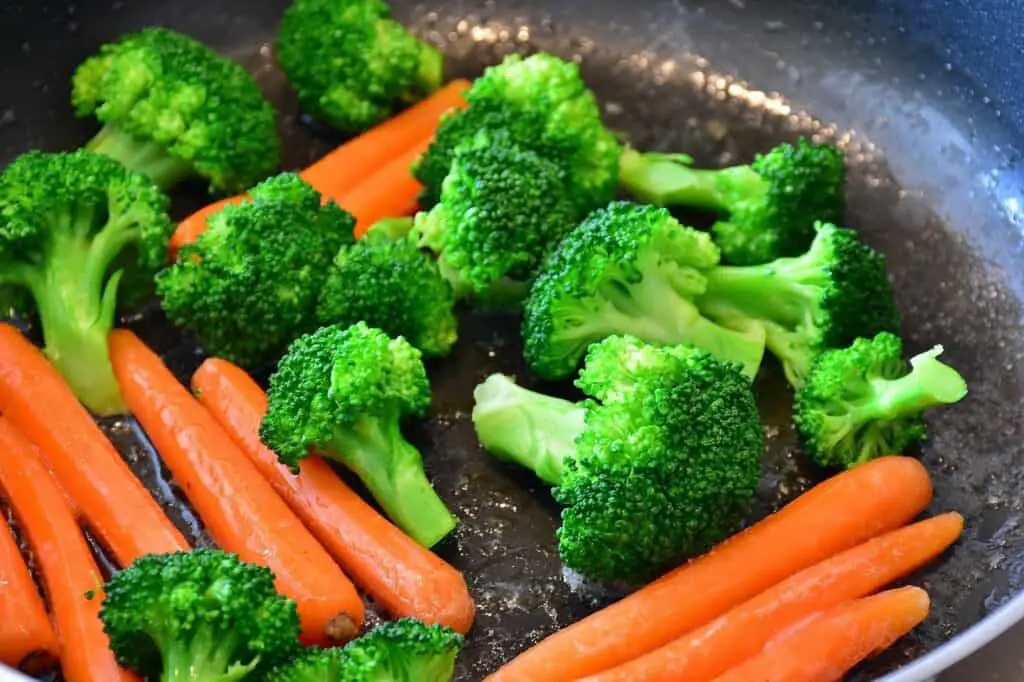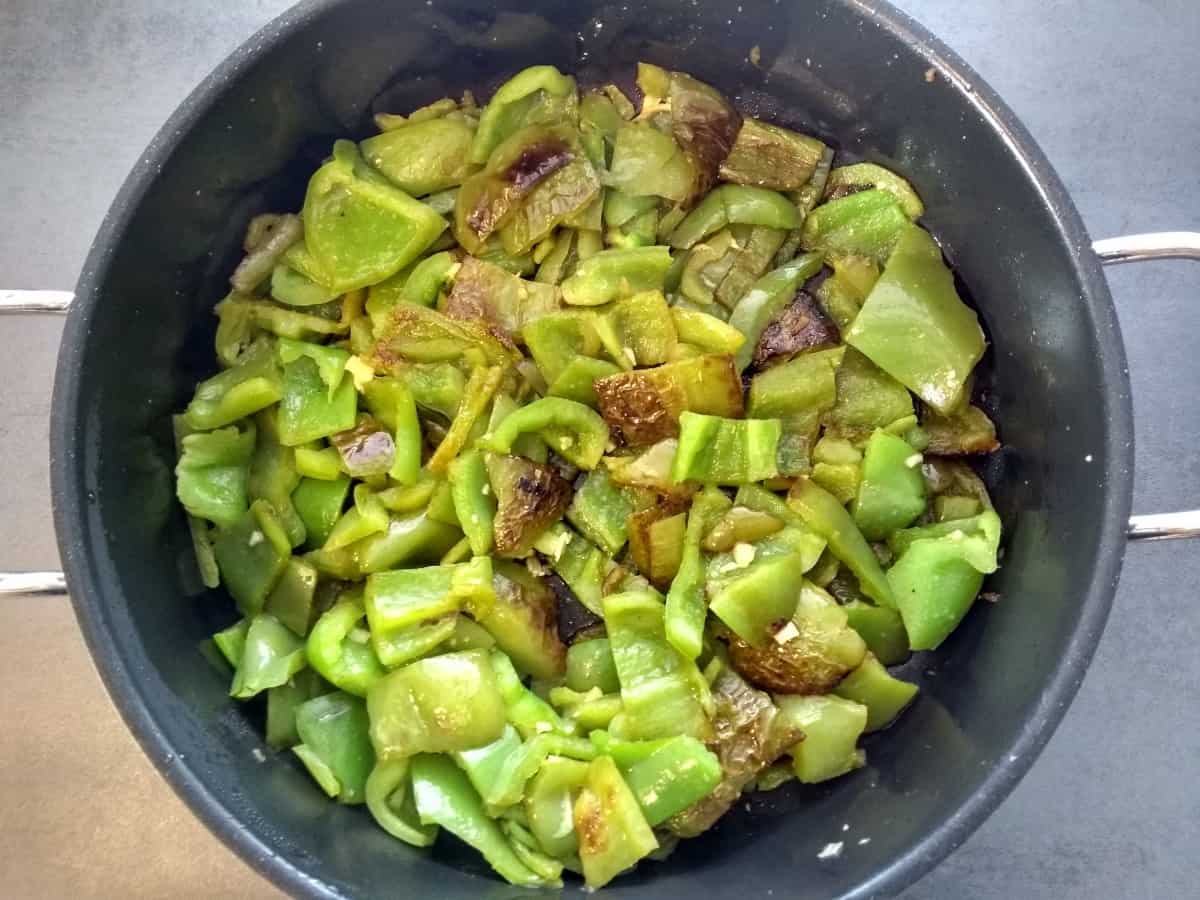Vegetables taste and look best when crispy and crunchy on the outside and soft on the inside. But it happens one too many times that vegetables get soggy. You might be in a hurry and want to fix them before the guests arrive. But how do you fix soggy vegetables or avoid mushy vegetables in the first place:
- Cut veggies into the right size
- Avoid overcrowding pan
- Shorten cooking time
- More oil and fat
- Boil them in shock water
- Parboil, cook, and then finish cooking
- Breading
- Add sugar or honey
- Add something acidic
- Change out liquid
- Use hot water
- Use ice water
- Cut off excess water
- Microwave on high
- Press between two plates
How to fix overcooked and soggy vegetables
The most important thing to stress when it comes to soggy or mushy vegetables is that vegetables should not be overcooked. This takes some practice, so don’t be discouraged. Let’s take a look at some steps you can take to showcase a great texture in your next vegetables.
Cutting your vegetables into the right size will help to speed up cooking time, thus decreasing the chances of making soggy vegetables.
It’s essential that you remember not to overcrowd the pan.
Using more oil or fat will help reduce cooking times as well, which means less chance of overcooked vegetables.
One way to fix soggy vegetables is to boil them in shock water. This will release the excess water and make the veggies crisp again.
Another way to make soggy vegetables crisp is to parboil them, cool them off, and then finish cooking them. To finish cooking, cover the dish with a lid.
Breading soggy vegetables with flour, egg, and breadcrumbs before frying them. This will lighten the veggies up again since they are soaked in oil after being fried.
To prevent soggy vegetables from happening, to begin with, you need to stop the cooking time with a bath of ice.
Quickly shocking your veggies in an ice bath stops the cooking process and keeps your vegetables at the perfect texture.
Watch your cooking time! The longer vegetables are cooked, the more water they will release. Do not let them overcook to the point where they become soggy and limp.
Cut off any excess water from the vegetable before putting it in the pot.
Add something acidic like lemon juice or vinegar-based dressing as soon as they go into the pot.
Change out the liquid that is boiling with something less dense, such as broth, wine, or water with herbs added.
Boil them for a shorter amount of time than what’s typically required for other vegetables.
Another way that works well with preventing vegetables from getting soggy is by adding sugar or honey. Adding these ingredients will help prevent moisture droplets from sticking to the vegetable, thus also preventing the vegetable from becoming soggy.
How to fix soggy roasted vegetables
There are a few ways to fix soggy roasted vegetables:
- Pour hot water over the roasting pan and then transfer the veggies back into the dried roasting pan;
- Put soggy vegetables into a colander set in a bowl of ice water
- Put them into a pan or bowl of cold water for about 30 minutes
- Use the microwave oven on high power for 30 seconds at a time, flipping once if needed
- Press them between two plates.
How to crisp up soggy roasted vegetables?
Add a small amount of olive oil to a saute pan. Heat the saute pan until you see a gentle waft of smoke and small ribbons forming in the pan. Saute the vegetables until moisture is removed and the vegetables have a more crispy texture. Be careful not to add too much water to the pan with oil in it.
Why are my roasted vegetables Mushy?
Vegetables break down during the cooking process. Water that is trapped inside the vegetable turns to steam and breaks down the structure. The longer the cooking time, the more water will evaporate and break down the texture and structure. The vegetable eventually gets a mushy texture due to overcooking.
How to keep veggies warm without getting them soggy?
One way to keep vegetables warm is by using a microwave. If you are looking for ways to fix soggy broccoli and cauliflower, I would recommend microwaving them to maintain the crisp texture after cooking.
However, if you are looking for ways to fix soggy carrots and green beans, you should use the microwave oven on high power for 30 seconds at a time, flipping once if needed.
Different solutions for different vegetables

Broccoli and cauliflower
For example, if you are looking for ways to prevent or to fix soggy broccoli and cauliflower, I would recommend the following:
- Blanching them using boiling water and ice baths after cooking. While this process works best with broccoli, shallow frying or baking cauliflower will also do the trick.
- Cut them into small pieces, around one inch in diameter.
- Use a single layer of vegetables with some space in between each piece to cook properly without overcooking them.
Carrots and green beans
If you are looking for ways of how to prevent or to fix soggy carrots and green beans, then it is best that you do the following:
- Blanch these vegetables as well after cooking them at a high temperature using oil or butter.
- Using a large pot can help with cooking times but will also require more room.
- Use medium heat instead of high heat during the cooking process.
- Add some oil or butter when cooking them in a pan after blanching the vegetables, followed by additional spices such as basil oregano, thyme, salt, and pepper. These ingredients will help enhance the natural flavors that are already within the vegetables.
Conclusion
It is important to remember that vegetables should not be overcooked. Cutting them into the right size, using a large pot if necessary, and adding in acidic ingredients are just some of the ways you can keep your vegetables from becoming soggy. You might also want to experiment with different cooking methods for each type of vegetable so you know what works best. Remembering these tips will help you cook up delicious dishes without having to worry about mushy veggies!


